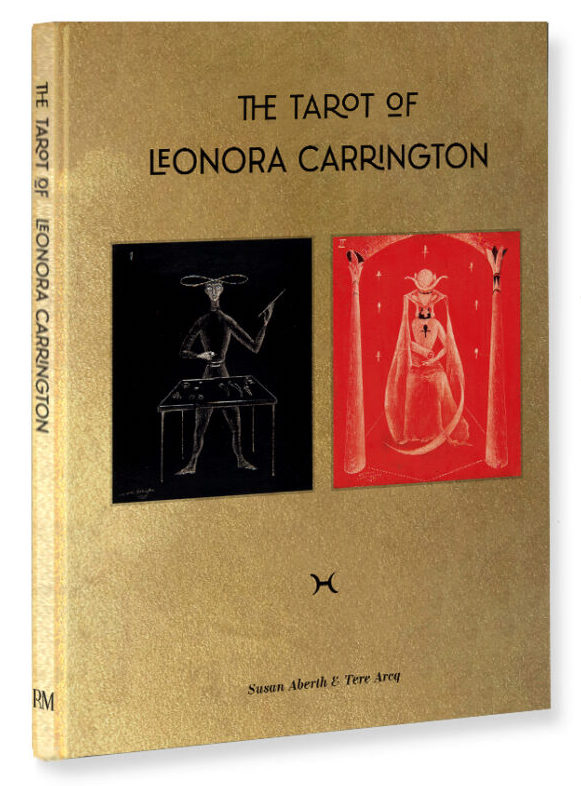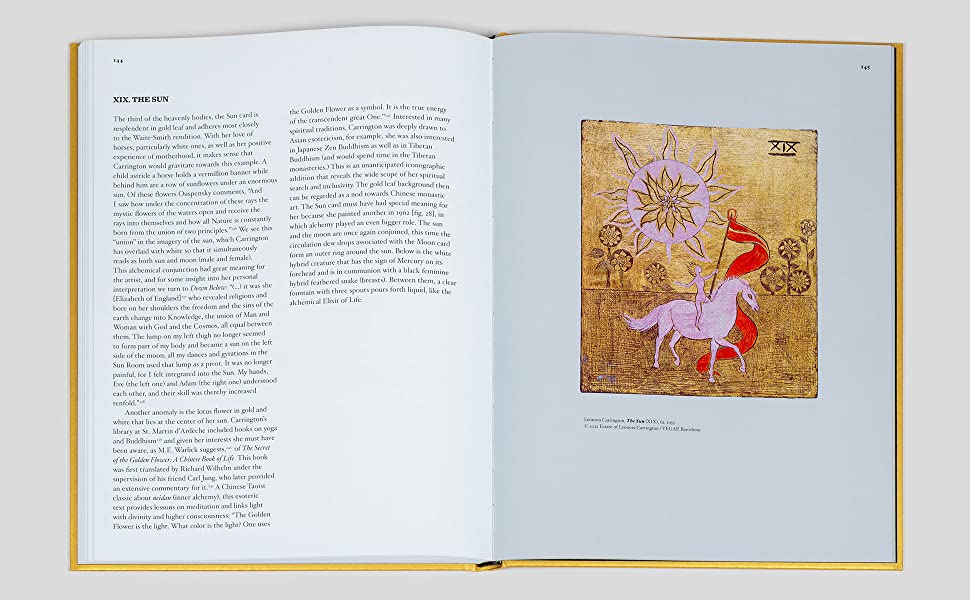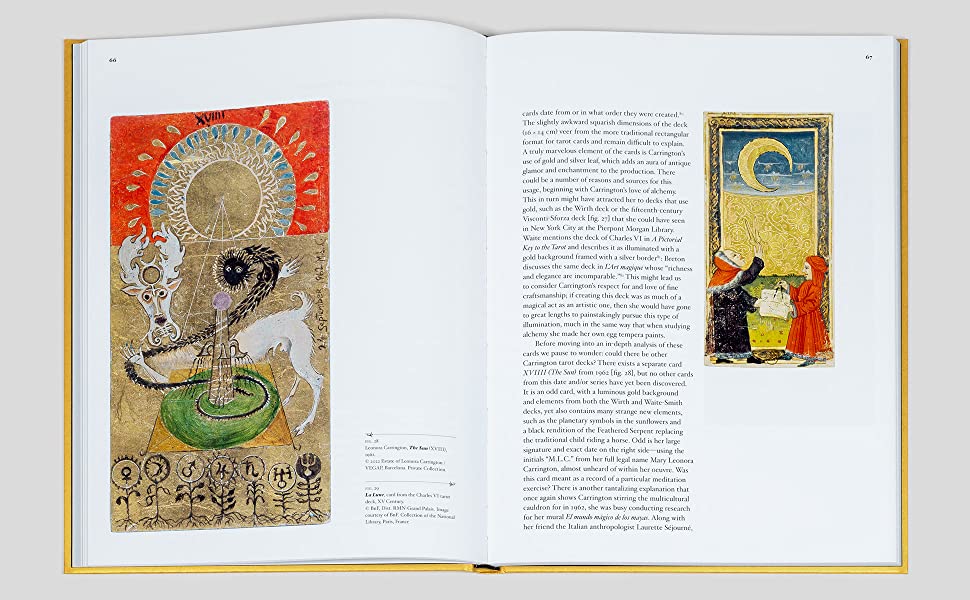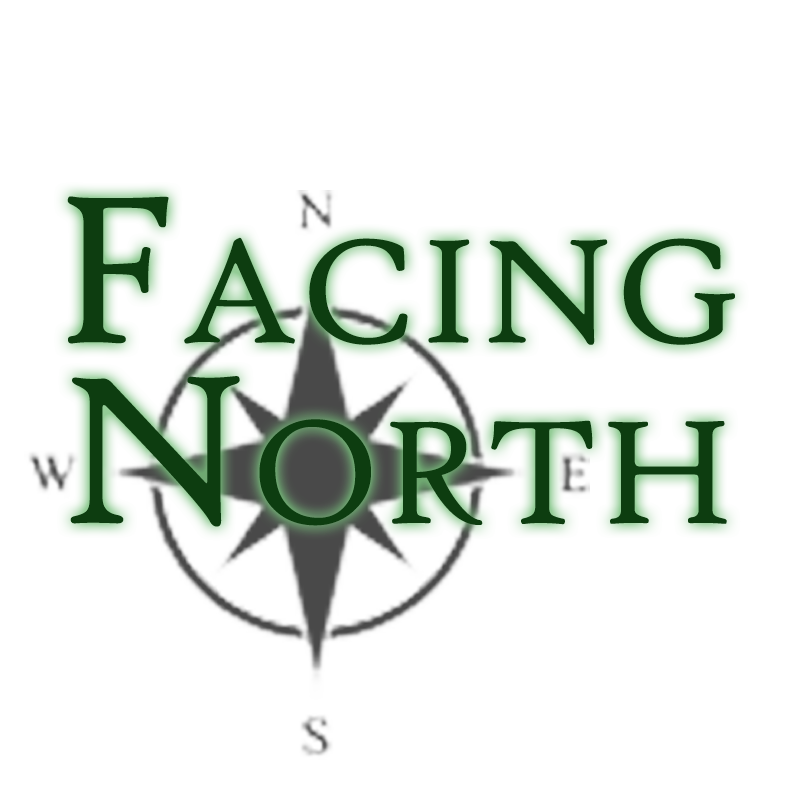
Art historians Susan Aberth and Tere Arcq published The Tarot of Leonora Carrington with Fulgur Press in 2020. Now, less than three years later, a revised and expanded edition has been released by Editorial RM (© 2023). The two volumes have the same title and both showcase Carrington's trumps-only Tarot deck, leaving readers, especially those already in possession of the earlier book, wondering if there is enough revision and expansion in the latest release to warrant a second purchase.
From a purely quantitative standpoint, the 168-page 2023 edition is not only longer, it is slightly taller and wider than the 118-page 2020 edition. Most of those extra pages are filled with text and color photographs of art work. In the earlier publication, the pages opposite the full-sized color reproductions of the cards are blank except for the labels. The new edition also dedicates full pages to card reproductions, but the labels are placed below the picture and the opposite page is devoted to text and images. The new edition has 263 notes and a bibliography with books and articles by 117 authors along with other items; the earlier edition has just eighty-six notes and a "further reading list" with thirty-one authors. Both editions include photographs of the artist, but the new edition has more of them. Both editions include full-sized reproductions of the cards, but only the new edition has two fold-out pages arranged so that all of the cards can be viewed at once. Individuals who were unable to get a copy of the actual deck published by Fulgur will find this particular feature a valuable bonus. Beyond these images, the 2020 edition includes additional reproductions of twenty-nine works by Carrington and seven by others; the 2023 edition includes an extra thirty-six (plus a detail) works by Carrington and over twenty by other artists or of objects.

Both books include Gabriel Weisz Carrington's commentary "Leonora's Inner Compass." (It has an extra endnote in the 2023 edition). The 2023 edition also has a prologue by Aberth and Arcq which accurately points to the greater attention they give to Carrington's use of color, her interest in alchemy, and to the influence on her work of Robert Graves's The White Goddess and Mesoamerican archaeology and mythology, as well as the connections between her visual art and her writings, particularly her novel The Stone Door. However, before the authors delve into their direct analysis of the cards, the changes to the 2020 text are hard to spot as they are limited to some additional notes and adjectives, a few word changes, alterations in paragraphing, and the occasional shuffling of paragraph placement.
The starting point for the deeper revisions and expansions of the text promised in the preface is marked by an illustration that is unique to the 2023 edition and is located just before the beginning of the card analysis: Carrington's "Drawing of Chart Color for an Enneagram" (1977). This diagram includes nine color samples with a few pencilled notes by the artist that are critical to a number of the points in the expanded discussion. The authors have also studied and made use of other sources in their observations about Carrington's use of color that will be of special interest to artists and art historians alike. It is not a point addressed in either book, but Tarot-historians will be intrigued by how Carrington's approach differed radically from that of Ithell Colquhoun, whose painterly "taro" color compositions seem to be largely based on revised Golden Dawn-based color scales. The expansion of analysis related to color and such matters as the organization of the cards and Carrington's translation of alchemy into "inclusivity" and feminist symbolism, means that cards summarized in a few sentences in the 2020 book are granted entire pages in the new one.

It is unfortunate that the revised book was not ready at the time the first edition was going to press. As many authors are aware, publication delays of a year or two or three are not uncommon and for reasons far less compelling than the need for more research time. The world was certainly prepared to wait on the publication of Ithell Colquhoun's Taro deck for several years after the book came out and the waiting obviously did not dampen sales. It could have waited for a "final" edition of The Tarot of Leonora Carrington and been spared the contemplation of the actual value added to the value-added edition. Such technicalities and practical considerations aside, anyone who reads Aberth and Arq's revised and expanded analysis all the way through will be well rewarded by the realization of the extraordinary content that Carrington integrated into her apparently simple card designs. The earlier edition relies somewhat on the artist's name to assert its audience appeal; the new 2023 edition is the one the historians will be citing. Highly recommended.
~review by Emily E. Auger
Authors: Susan Aberth and Tere Arcq
Introduction by Gabriel Weisz Carrington
Editorial RM, 2023
65 US$
